What is the difference between hazel and hazelnuts?
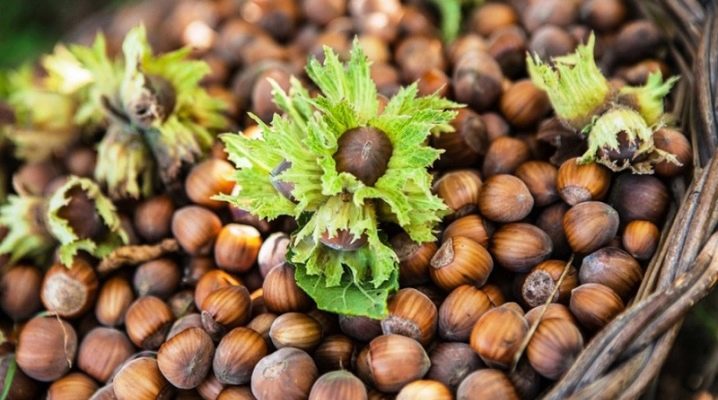
That hazel, that hazelnuts - for many it is one and the same nut. In the article we will tell you what is the difference between them, which one is more useful. You will find out in what conditions the hazel grows, and in what conditions the hazelnut tree feels better.
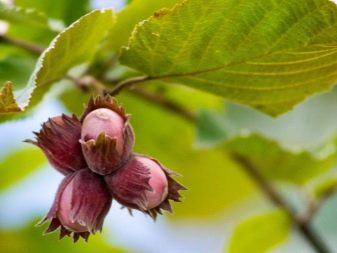

How are they different in appearance?
The difference between hazelnuts and hazelnuts is in their growth: the former is considered a domesticated version of the hazelnut that grows in the wild. In other words, hazelnuts are the work of breeders who have developed large-fruited hazel varieties. These include common hazel, tree hazel, Pontic and other varieties. Hazelnuts give higher yields, and their nuts are larger than those of their wild counterpart. These species can be distinguished not only by the size of the nuts, but also by other characteristics. Thus, breeding varieties have larger foliage and a bulky trunk.
Hazel, on the other hand, grows in the wild more as a shrub, it has thin, often matted branches with small leaves. You can rarely meet a hazel tree, as a rule, it is a bush no more than 3 meters high. But a hazelnut tree can reach 8 meters, but if it is a bushy hazelnut variety, then it will gain a height of up to 5 meters. And the trunk of a tree-like hazel (cultivated version) can grow up to 20 meters - this type of hazelnut is listed in the Red Book of the Russian Federation.
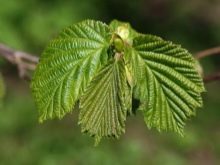

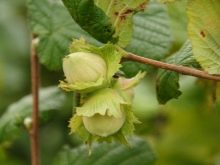
Difference in yield
Fruiting characteristics reflect the difference in yield between wild and domestic hazel.
- In one seed-fruit of hazel usually 1-2 fruits with a diameter of up to 1.5 cm - no more, and hazelnuts have 4-5 nuts of 2.5 cm each, or even more in diameter.
- A young hazelnut will begin to bear fruit only 7-8 years after germination, and garden species will delight with the harvest in 4-5 years from the moment of planting.
- Hazel takes a break in its development for 1-2 years every about 5 years. In this state, hazel either does not bear fruit, or gives a scanty amount of nuts. Hazelnuts are always happy with the harvest.
The main difference is in the quantitative composition of the yield of these types of nuts. A hazel tree or bush gives up to 3 kilograms of nuts, and its home cousin - three times more.
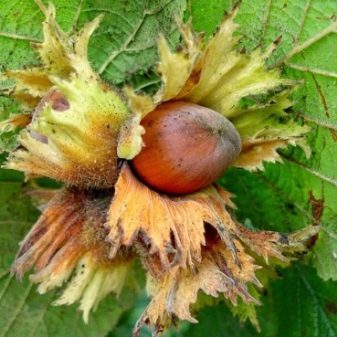

Comparison of other characteristics
Both are from the birch family. Hazel got its name due to the shape of the leaf, which is similar to the body of a bream. But, as already noted, hazel grows independently in the wild, and hazelnuts are its cultivated variety. In addition to the size of the fruit, there are other distinctive characteristics of these species.
- Root system the cultivated version of hazel is more powerful and more developed, which allows the plant to actively feed and bear fruit better.
- But it is believed that hazelnut fruits are more valuable due to the fact that they grow in their natural environment. Hazelnuts ripen later than hazelnuts, it is very difficult to collect hazelnuts - most of them disappear, crumbling in the thickets.
- Known about 20 varieties of wild hazel and about hundreds of varietal varieties of hazelnuts.
Hazelnuts are more sensitive than hazelnuts.


Requirements and growing conditions
Consider the difference between plants based on climatic characteristics and growing conditions. Hazelnuts have stronger immunity, but there are other distinctive characteristics.
- Frost resistant... Even during flowering, it can survive at temperatures of 13 degrees below zero.
- Shady... Grows well and bears fruit in the shady area of the site.
- Withstands drought. The root system of a hazelnut tree is quite well developed, its roots go deep into the ground, from where it replenishes moisture.
- Not afraid of parasites and various diseases.
- Steadfastly carries over climatic changes.
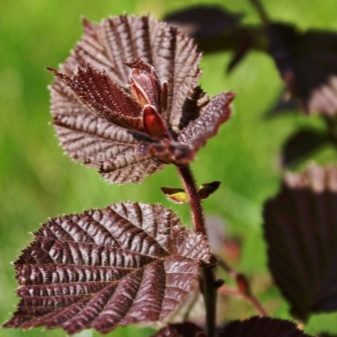
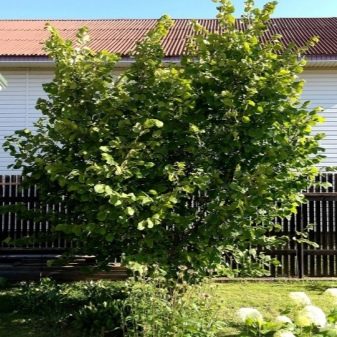
And although, according to the botanical version, hazelnuts and hazelnuts are one and the same hazel, but growing in different conditions (in the wild and in a cultural space), the former is not so hardy.
- Hazel can withstand only up to 8 degrees of frost and it is difficult to tolerate sudden temperature changes.
- He is uncomfortable in the shade, but he also grows poorly in direct sunlight.... Ideal conditions for growing hazel in the wild are semi-shaded, sparse undergrowth.
- Hazelnut is not as tolerant of dry weather as its roots are not so deep in the soil, to draw moisture out of the ground, as its domesticated counterpart does.
- Hazel is often attacked by various parasites and diseases.
Through the efforts of breeders, hazelnuts are more hardy than hazel. In addition, there is care for him, and in the wild, everything is a little different - hence the fruits are not so large in hazelnuts, and the yield is lower. But when it comes to utility, both options are equally beneficial.
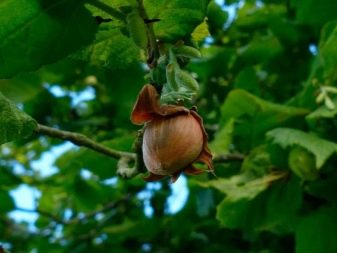
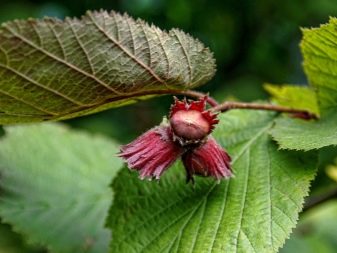
Flavor and nutritional value
According to these indicators, hazel is superior to hazelnuts: hazelnuts have more advantages than the garden version - the nutritive value of hazel fruits is higher. Their kernels with a rich, but tart and bitter taste are considered more useful for humans. But hazelnuts are tastier: different varieties have nuts that are sweetish, sometimes with an almond flavor, there are with a spicy note, and so on. In homemade hazel, due to the increased protein (13 g), fat (62.6 g) and carbohydrates (9.3 g), the energy value is slightly higher:
- hazelnuts - 660 kcal per 100 g;
- hazelnut - 628 kcal per 100 g.
In general, both species are rich in nutrients. If you eat 100 g of hazel (wild or homemade), the body will receive:
- double the daily rate of iron;
- 1.5 daily intake of vitamin E;
- ½ part of the required rate per day of phosphorus and magnesium;
- 1/5 of the need for potassium and calcium.


What other benefits do hazel and hazelnuts give to humans?
- They have a beneficial effect on the nerves due to the presence of vitamins of almost the entire B group in the nuclei.
- Potassium and magnesium in conjunction with B vitamins help support heart function and strengthen the entire cardiovascular system.
- Both nuts strengthen teeth, bones, ligaments, improve the functioning of the muscular system and joints.
- They have a rejuvenating effect on the skin due to the high content of vitamin E, which helps to curb the aging process, the appearance of wrinkles, strengthens the scalp and nails.
- Reduces cholesterol and cleanses blood vessels.
- Traditional medicine recommends to use more of such nuts for kidney disease and liver pathologies. It is known that Hippocrates also advised to treat the stomach, kidneys and liver with hazelnuts.
- There is evidence that hazelnuts and hazelnuts increase potency and sperm quality, as well as female reproductive function.


The product helps to normalize hormones, strengthens memory and brain activity, and increases concentration. It is recommended for those who have been diagnosed with Alzheimer's syndrome. For vegetarians, this is the first product to replace animal protein. Both wild and garden hazel are equally beneficial to health. Nuts differ in taste and kernel size, but overall they are nutritious.
But do not eat nuts uncontrollably. For good, eat no more than 20 kernels per day, or rather, a handful that fits in your palm. Due to the high calorie content and the presence of concentrated fatty acids, hazel is undesirable for people who are prone to obesity. It is very difficult to find hazelnuts on the shelves of retail outlets, picking nuts of a wild plant is not easy: small fruits crumble, and finding them in a densely growing bush is not an easy task. This is why stores offer more hazelnuts today.People grow it not only for themselves on personal plots, but also on separate large plantations for sale.


Place of growth
Hazel grows in the wild along with broadleaf and coniferous trees. It is often found in a mixed forest zone. Flowers self-pollinate, they have both male and female components, so the hazel's own resources are quite enough for the formation of fruits. Hazelnuts are found almost a century ago: their lifespan is up to 90 years. Hazel inhabits, as a rule, in the middle zone of Eurasia (in Russia also in the middle latitudes), but it is very common in the northern part of the United States, in places with similar climatic conditions.
Hazelnut easily tolerates mild winters, loves a temperate climate, unpleasant summers and places in partial shade... Hazelnuts are willingly planted by people, choosing certain varieties, taking care of the trees. Today, up to 100 different varieties of cultivated hazel are known. Garden hazel is also grown on an industrial scale for the food industry, and the wood is given for the manufacture of furniture.
There are also decorative varieties of hazel, they are planted to create a landscape environment.
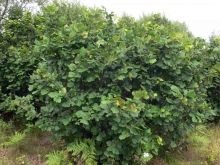

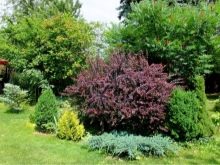









The comment was sent successfully.